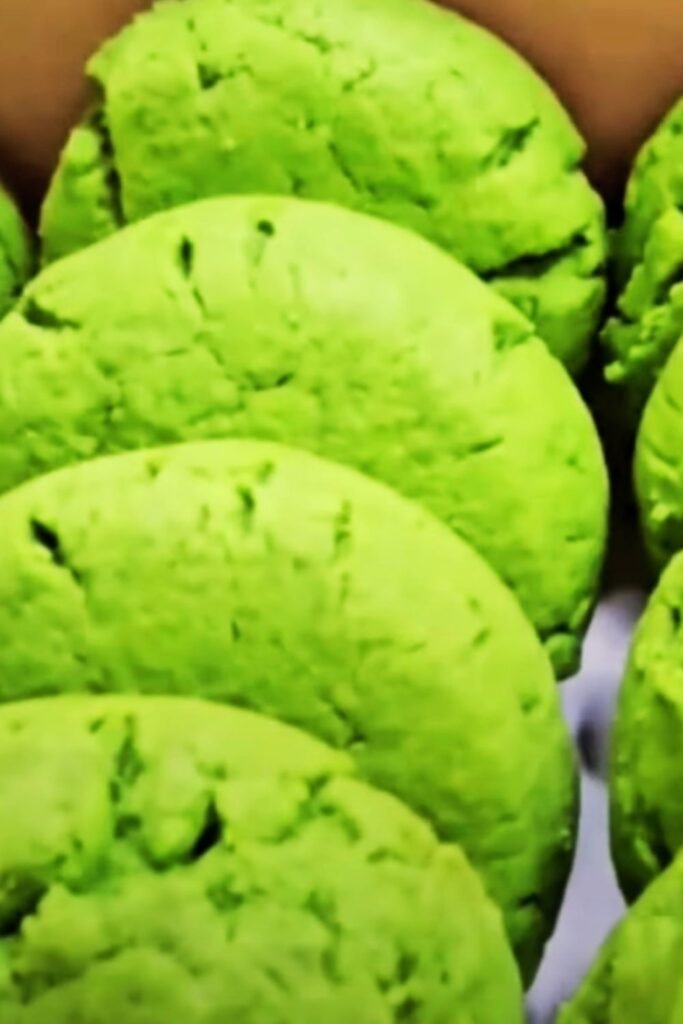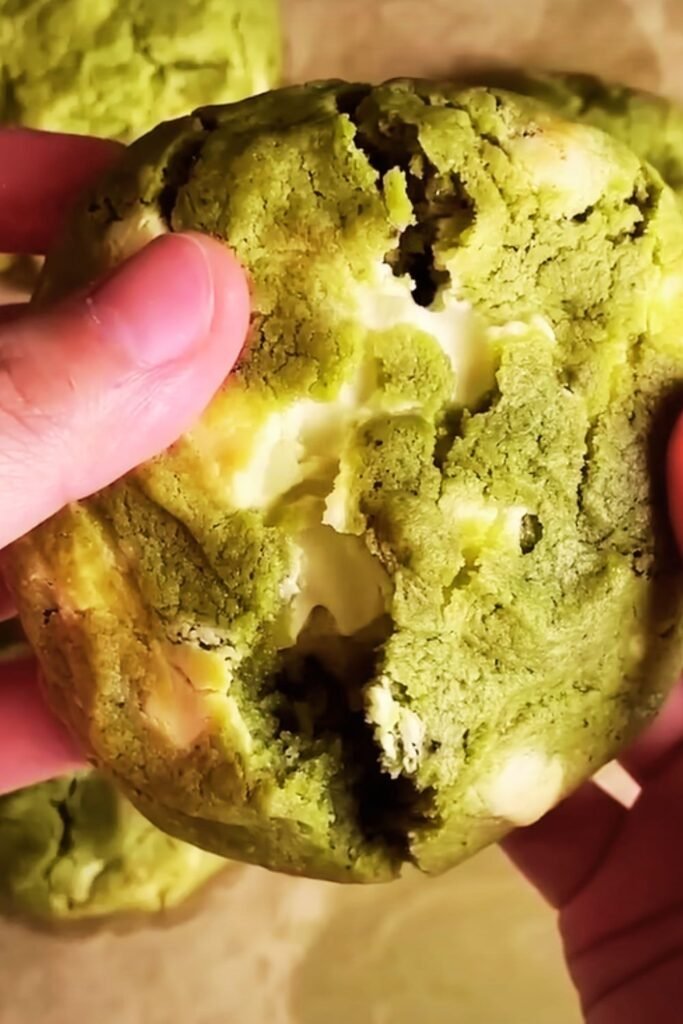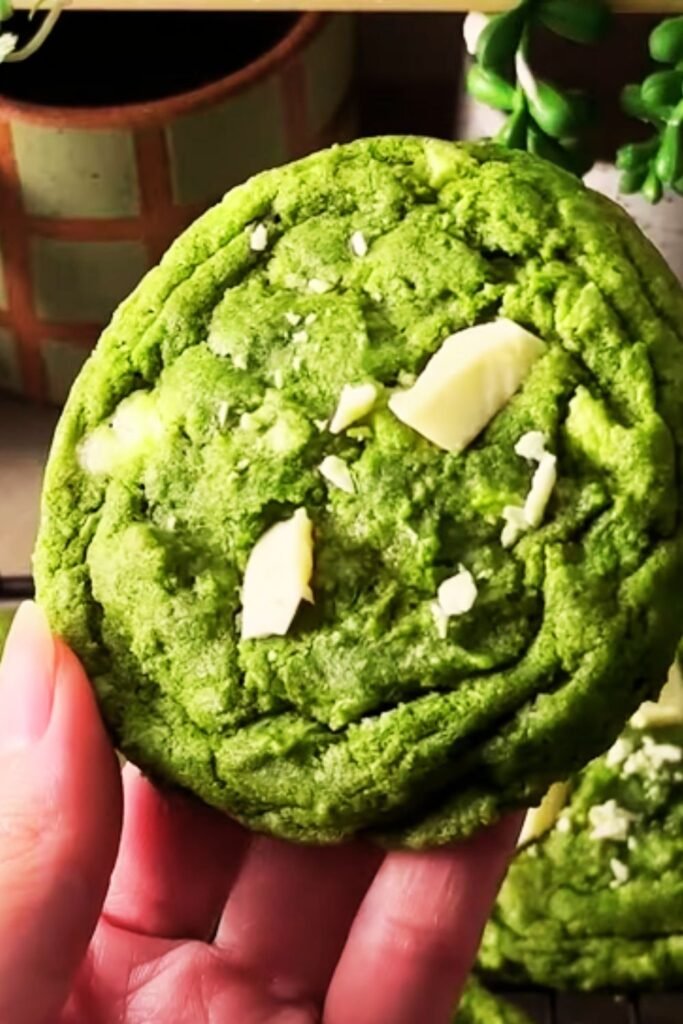There’s something magical about the earthy, umami-rich flavor of matcha paired with the buttery crumble of traditional shortbread. When I first discovered matcha shortbread cookies during my culinary adventures, I knew I had found something special. These naturally green treats combine the best of Japanese tea culture with classic European baking techniques, creating a cookie that’s both sophisticated and comforting.
My journey with matcha began years ago when I visited a traditional tea house in Kyoto. The vibrant green powder intrigued me, and after tasting my first matcha latte, I became obsessed with incorporating this antioxidant-rich ingredient into my baking. Today, I’m sharing my perfected recipe for naturally green matcha tea shortbread cookies that have become a staple in my lakehouse kitchen.
Understanding Matcha: The Heart of These Cookies
Matcha : Finely ground powder made from specially grown and processed green tea leaves (Camellia sinensis)
Ceremonial Grade Matcha : The highest quality matcha, perfect for baking and drinking, with a vibrant green color and smooth, less bitter taste
Culinary Grade Matcha : A more affordable option specifically designed for cooking and baking, with a stronger flavor that holds up well in recipes
Umami : The fifth taste sensation, characterized by a savory, earthy flavor that matcha contributes to baked goods
The quality of matcha you choose dramatically impacts your cookies’ final taste and color. I’ve tested countless brands over the years, and I can confidently say that investing in good matcha makes all the difference. The natural chlorophyll in high-quality matcha creates that stunning emerald hue without any artificial coloring.
The Science Behind Perfect Shortbread
Creating the perfect shortbread texture requires understanding the science behind this classic cookie. The traditional ratio for shortbread follows the “1-2-3” rule: one part sugar, two parts butter, and three parts flour. However, when incorporating matcha, I’ve discovered that slight modifications create superior results.
Butter Temperature : Room temperature butter (around 65-68°F) creams perfectly with sugar, creating the ideal texture
Flour Selection : All-purpose flour provides the right protein content for tender, crumbly cookies
Mixing Technique : Minimal mixing prevents gluten development, ensuring that signature shortbread crumble
Matcha Integration : Sifting matcha with flour prevents clumping and ensures even distribution

Essential Ingredients and Their Roles
| Ingredient | Amount | Purpose | Quality Tips |
|---|---|---|---|
| Unsalted Butter | 1 cup (226g) | Provides richness and signature shortbread texture | Use European-style butter for higher fat content |
| Powdered Sugar | ⅔ cup (80g) | Creates tender texture, dissolves easily | Sift to remove lumps |
| All-Purpose Flour | 2 cups (240g) | Structure and body | Measure by weight for accuracy |
| Ceremonial Grade Matcha | 2-3 tablespoons | Flavor and natural color | Store in airtight container away from light |
| Fine Sea Salt | ¼ teaspoon | Enhances flavors | Avoid table salt which can taste harsh |
| Vanilla Extract | 1 teaspoon | Complements matcha’s earthiness | Use pure vanilla, not imitation |
The beauty of these cookies lies in their simplicity. Each ingredient plays a crucial role, and there’s nowhere for inferior products to hide. I source my matcha from reputable Japanese suppliers, ensuring authenticity and quality that shines through in every bite.
Step-by-Step Baking Process
Preparation Phase
Before beginning, I always set up my workspace completely. This mise en place approach ensures smooth execution and prevents any mishaps that could affect the delicate balance of flavors.
• Preheat oven to 325°F (163°C) – this lower temperature prevents the matcha from becoming bitter • Line baking sheets with parchment paper or silicone mats • Bring butter to room temperature (this takes about 2-3 hours) • Sift flour and matcha together twice to ensure no clumps remain • Measure all ingredients by weight for precision
Creating the Dough
The mixing process requires patience and attention to detail. I’ve learned that rushing this stage results in tough, dense cookies rather than the tender, crumbly texture we’re after.
• Cream butter in a stand mixer fitted with paddle attachment for 3-4 minutes until light and fluffy • Gradually add powdered sugar, beating until completely incorporated • Add vanilla extract and mix briefly • Add salt to the flour-matcha mixture • With mixer on low speed, gradually add dry ingredients • Mix just until dough comes together – overmixing develops gluten and creates tough cookies

Shaping and Chilling
The shaping method you choose affects both appearance and baking time. I prefer the log method for consistent results, but I’ll share multiple techniques.
Log Method (My Preferred Technique) • Transfer dough to plastic wrap or parchment paper • Form into a log approximately 2 inches in diameter • Wrap tightly and refrigerate for at least 2 hours or overnight • Slice into ¼-inch thick rounds using a sharp knife
Pat and Cut Method • Pat dough into a rectangle on parchment paper • Chill for 30 minutes • Cut into desired shapes using cookie cutters or a knife
Hand-Rolled Method • Portion dough into tablespoon-sized pieces • Roll into balls and flatten slightly with fingers • Creates a more rustic, homemade appearance
Baking Techniques for Perfect Results
| Temperature | Time | Visual Cues | Internal Temperature |
|---|---|---|---|
| 325°F (163°C) | 12-15 minutes | Edges just set, centers still soft | Not applicable for cookies |
| 300°F (149°C) | 15-18 minutes | For thicker cookies, slower baking | Prevents browning |
| 350°F (177°C) | 10-12 minutes | Only for very thin cookies | Watch carefully to prevent burning |
The key to perfect matcha shortbread lies in low, slow baking. High temperatures can cause the matcha to become bitter and the natural green color to fade. I’ve experimented extensively with different temperatures and timing combinations, and the 325°F sweet spot consistently produces the best results.
During baking, I rotate the pans halfway through to ensure even cooking. The cookies are done when the edges are just set but the centers still appear slightly soft. They’ll continue cooking on the hot pan after removal from the oven.

Troubleshooting Common Issues
Through years of perfecting this recipe, I’ve encountered and solved numerous challenges. Here are the most common issues and my solutions:
Cookies Spread Too Much • Dough was too warm when baking • Insufficient chilling time • Butter was too soft during mixing • Solution: Chill shaped cookies for 30 minutes before baking
Green Color Appears Dull • Matcha quality is poor • Oven temperature too high • Overbaking • Solution: Use ceremonial grade matcha and monitor baking closely
Bitter Aftertaste • Low-quality matcha • Oven temperature too high • Matcha not properly sifted, creating concentrated pockets • Solution: Invest in better matcha and sift thoroughly
Cookies Too Crumbly • Overmixed dough • Too much flour • Insufficient butter • Solution: Measure ingredients by weight and mix minimally
Flavor Variations and Adaptations
While the classic matcha shortbread is perfection on its own, I’ve developed several variations that add exciting dimensions to these cookies.
White Chocolate Matcha Shortbread • Add ⅓ cup white chocolate chips to the dough • The sweetness balances matcha’s earthiness beautifully
Matcha Almond Shortbread • Replace ¼ cup flour with almond flour • Add ½ teaspoon almond extract • Creates a nutty depth that complements the tea flavor
Sesame Matcha Shortbread • Add 2 tablespoons toasted sesame seeds • Drizzle with white chocolate after cooling • A nod to traditional Japanese sweets
Citrus Matcha Shortbread • Add zest of one lemon or yuzu • The brightness cuts through matcha’s richness
Storage and Preservation
Proper storage maintains these cookies’ delicate texture and prevents the matcha from losing its vibrant color and flavor.
Room Temperature Storage • Store in airtight containers for up to one week • Layer between parchment paper to prevent sticking • Keep away from strong odors that could affect the delicate matcha flavor
Freezing Options • Unbaked dough logs freeze for up to three months • Wrap tightly in plastic wrap, then foil • Baked cookies freeze for up to two months in airtight containers
Dough Preparation Ahead • Mix dough up to three days in advance • Keep refrigerated in wrapped logs • Actually improves flavor as ingredients meld together
Nutritional Benefits and Considerations
| Nutrient | Per Cookie (approx.) | Health Benefits |
|---|---|---|
| Calories | 85-95 | Moderate energy from healthy fats |
| Antioxidants | High from matcha | Anti-inflammatory properties |
| Catechins | 15-20mg | Supports metabolism |
| L-theanine | 5-8mg | Promotes calm alertness |
| Caffeine | 8-12mg | Gentle energy boost |
Matcha provides numerous health benefits that make these cookies a more nutritious treat option. The high concentration of antioxidants, particularly EGCG (epigallocatechin gallate), offers anti-inflammatory and metabolism-boosting properties. Unlike coffee, matcha provides sustained energy without the crash due to its L-theanine content.
Serving Suggestions and Pairings
These naturally green matcha shortbread cookies shine in various serving contexts. I’ve served them at elegant tea parties, casual afternoon gatherings, and holiday celebrations with equal success.
Traditional Tea Service • Pair with sencha or gyokuro green tea • Serve on delicate porcelain plates • Accompany with fresh fruit like strawberries or pears
Modern Coffee Shop Style • Crumble over vanilla ice cream • Dip halfway in dark chocolate • Serve alongside oat milk lattes
Holiday Presentations • Package in cellophane bags with ribbon for gifts • Arrange on tiered serving stands • Dust with additional matcha powder for visual appeal
Dessert Course Applications • Use as base for matcha shortbread crust in tarts • Crumble over matcha panna cotta • Sandwich with matcha buttercream for special occasions
Cultural Significance and History
Understanding matcha’s cultural importance enriches the experience of these cookies. Matcha originated in China during the Tang Dynasty but found its true home in Japan, where it became central to the traditional tea ceremony (chanoyu).
The tea ceremony emphasizes mindfulness, respect, and the appreciation of simple beauty – values I try to incorporate into my baking process. When I make these cookies, I approach the task with the same reverence and attention to detail that tea masters bring to their craft.
In recent years, matcha has gained popularity worldwide, not just for its unique flavor but also for its impressive health benefits. These cookies represent a beautiful fusion of Eastern tradition and Western baking techniques, creating something entirely new while honoring both cultures.
Questions and Answers
Q: Can I substitute matcha with regular green tea powder? Regular green tea powder won’t provide the same intense flavor or vibrant color. Matcha undergoes a special growing and processing method that concentrates its flavor and nutrients. For best results, invest in genuine matcha powder.
Q: Why do my cookies turn brown instead of staying green? This usually indicates that your oven temperature is too high or you’re overbaking the cookies. Matcha is sensitive to heat, and excessive temperatures cause the chlorophyll to break down. Stick to 325°F and watch for the edges to just set.
Q: Can I make these cookies gluten-free? Yes! Replace the all-purpose flour with a 1:1 gluten-free baking flour blend. The texture will be slightly different but still delicious. I recommend adding an extra tablespoon of butter to compensate for any dryness.
Q: How can I tell if my matcha is fresh and high-quality? Fresh, high-quality matcha should be vibrant green (not yellow or brown), have a sweet, grassy aroma, and taste smooth without excessive bitterness. It should dissolve easily without clumps when whisked with water.
Q: Can I reduce the sugar in this recipe? You can reduce the powdered sugar by up to 25% without significantly affecting the texture. However, keep in mind that sugar provides moisture and tenderness in shortbread, so the cookies may be slightly less tender.
Q: What’s the best way to measure matcha powder? Always sift matcha before measuring, then use a spoon to fill your measuring spoon and level it off. Don’t pack it down. For the most accurate results, use a kitchen scale – 2 tablespoons of matcha equals approximately 12-15 grams.
Q: Can I double this recipe? Absolutely! This recipe doubles and even triples well. Just make sure your mixer can handle the larger quantity of dough, and you may need to divide the dough into multiple logs for easier handling.
Q: How do I prevent the cookies from becoming too hard? The main culprits for hard shortbread are overmixing the dough and overbaking. Mix just until the dough comes together, and remove the cookies from the oven when the edges are set but centers still look slightly soft.
Q: Can I add other flavors to complement the matcha? Certainly! Matcha pairs beautifully with white chocolate, vanilla, almond, coconut, and citrus flavors. Start with small amounts (1-2 teaspoons of extracts or ¼ cup of add-ins) to avoid overwhelming the delicate matcha flavor.
Q: Why is my dough too crumbly to shape? If your dough is too crumbly, it usually means the butter wasn’t soft enough when mixed, or you have too much flour. Try kneading the dough gently with your hands – the warmth will help bring it together. If it’s still too dry, add a teaspoon of cream or milk.
Making naturally green matcha tea shortbread cookies has become one of my favorite baking projects. Each batch brings me joy, from the meditative process of sifting the vibrant green powder to the satisfaction of sharing these unique treats with friends and family. The combination of traditional shortbread techniques with the exotic appeal of matcha creates cookies that are both familiar and surprising.
These cookies represent everything I love about baking: the precision required for success, the creativity possible within structure, and the way simple ingredients can transform into something extraordinary. Whether you’re new to matcha or a long-time enthusiast, I believe these cookies will become a cherished addition to your baking repertoire.
The naturally green color, derived entirely from the matcha powder, never fails to impress guests. But beyond their striking appearance, these cookies offer a complex flavor profile that evolves with each bite – starting with butter richness, followed by the earthy depth of matcha, and finishing with a subtle sweetness that invites another cookie.
I encourage you to embrace the mindful approach that matcha culture teaches us. Take time to source quality ingredients, pay attention to each step of the process, and savor the results with appreciation. In our fast-paced world, these moments of intentional creation and consumption become even more precious.